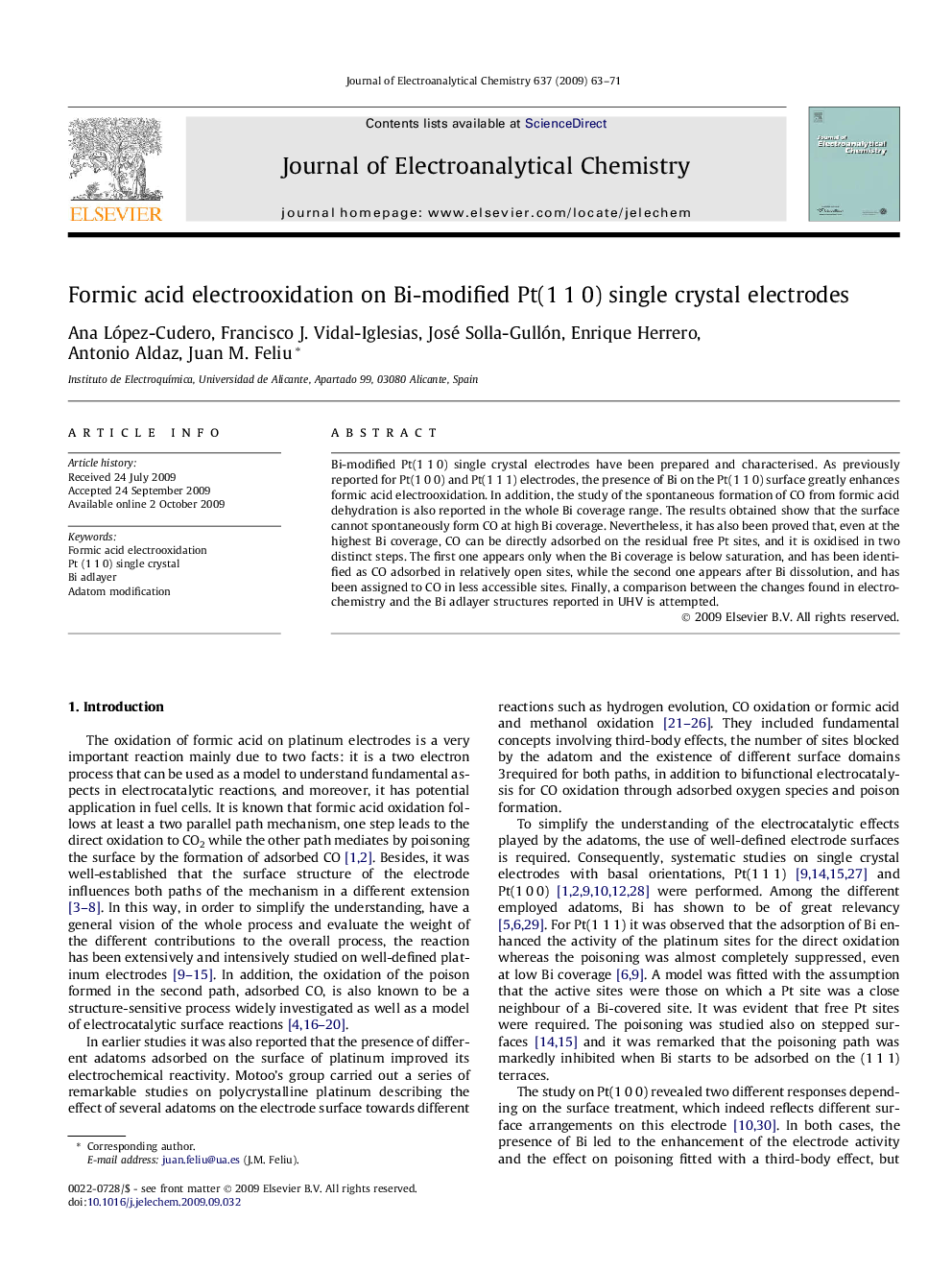| Article ID | Journal | Published Year | Pages | File Type |
|---|---|---|---|---|
| 220165 | Journal of Electroanalytical Chemistry | 2009 | 9 Pages |
Bi-modified Pt(1 1 0) single crystal electrodes have been prepared and characterised. As previously reported for Pt(1 0 0) and Pt(1 1 1) electrodes, the presence of Bi on the Pt(1 1 0) surface greatly enhances formic acid electrooxidation. In addition, the study of the spontaneous formation of CO from formic acid dehydration is also reported in the whole Bi coverage range. The results obtained show that the surface cannot spontaneously form CO at high Bi coverage. Nevertheless, it has also been proved that, even at the highest Bi coverage, CO can be directly adsorbed on the residual free Pt sites, and it is oxidised in two distinct steps. The first one appears only when the Bi coverage is below saturation, and has been identified as CO adsorbed in relatively open sites, while the second one appears after Bi dissolution, and has been assigned to CO in less accessible sites. Finally, a comparison between the changes found in electrochemistry and the Bi adlayer structures reported in UHV is attempted.
